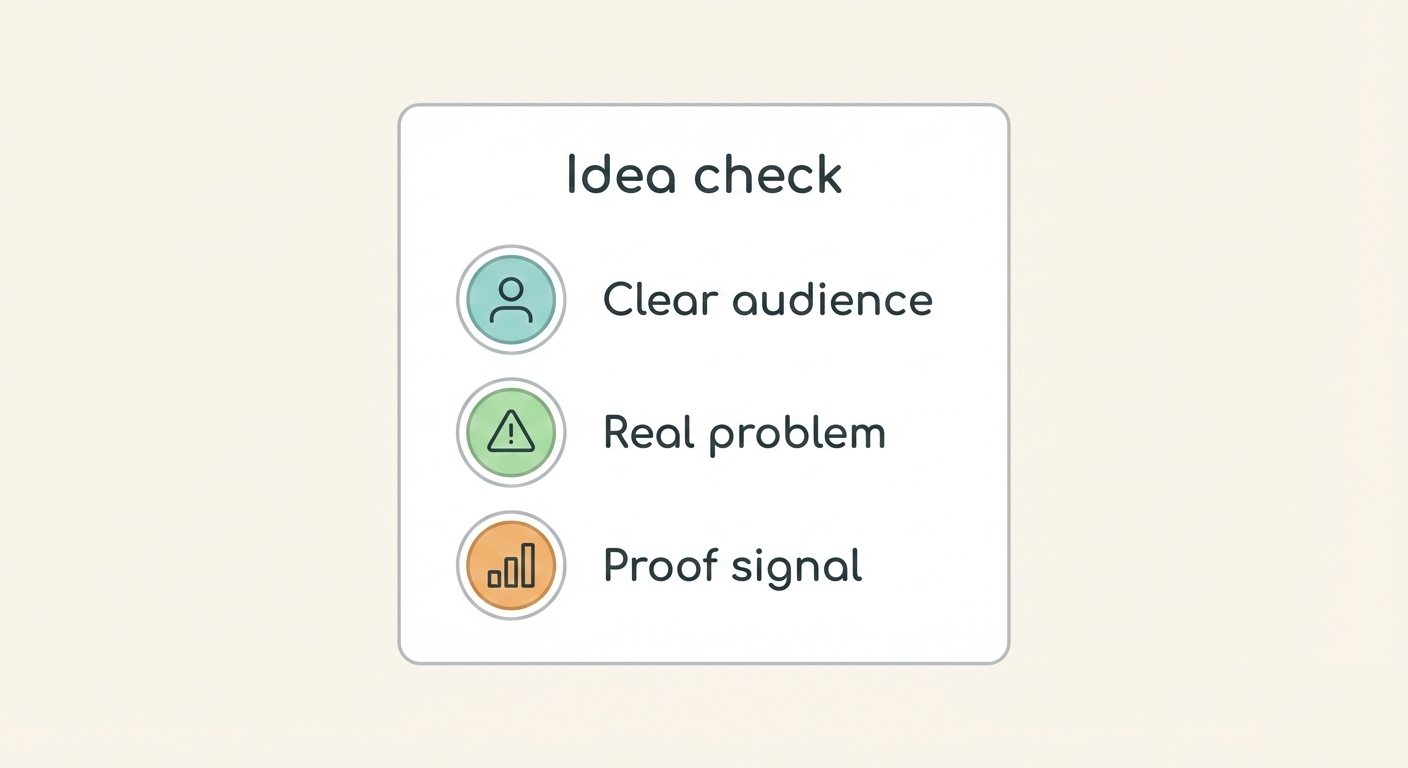All You Need to Know About How to Start a Fully Remote Company

The COVID-19 pandemic is one of the hardest hits the world has taken in decades. Yet, with it came some discoveries of how resilient people can be. From an increase in remote work to the creation of more digital businesses such as online courses and more.
On the subject of remote work, this isn't a new occurrence. Heck, before the industrial revolution, almost everyone worked from their homes. Then came the need for industries and offices. Right now, remote work is becoming more mainstream.
Over the past 5 years, this trend has been rising steadily. Although the pandemic certainly created more than an uptick in it.
Due to the pandemic, 64% of US employees began to work from home and most of them would like to keep it that way. 59% of US workers will prefer to continue working remotely even after the pandemic [1].
Guess there are more perks to working remotely then.
Let's review some of them
Benefits of Remote Working

1. Increased productivity
Dedicated workers are likely to get more work done at home without all the distractions that often come with an office environment. It might sound counterintuitive seeing as there are quite a lot of distractions at home. However, a remote worker’s schedule is more flexible and they can control it as they see fit.
What's more?
A typical employee in an office will probably stare at the clock several times waiting until it's time to go home. And they most definitely wouldn't want to bring their work home. Someone working from home could pick up their PC any moment they want and get some work done.
2. Reduced cost of labor
Office space is not cheap. Not to mention the issue of utility bills and office staff. This office staff includes security personnel, kitchen staff, and more. These costs can add up very quickly.
It also reduces the cost of absentees and might reduce payroll costs. Apparently, 37% of tech professionals would agree to work remotely for a 10% pay cut [2].
A survey even showed that an average employer can save up to $11,000 per half-time telecommuter per year [3].
It's also more cost-efficient for the employees. They don't have to spend money on gas or public transportation to work, and other work-related expenses. Workers can save somewhere between $2,500 and $4,000 yearly by working at home half the time.
3. Increased diversity in staffing
Geographic boundaries that often keep companies from hiring experts don't hold water here. A business can hire employees from far and near with no hassles. So, they can take their pick of professionals without worrying about if they can afford them.
This also means they are not forced to hire only locals who might not be best suited for the position.
4. It’s much safer for the environment
Telework (Remote work) eliminates the need to commute to a central place of work. This reduces carbon footprint and carbon emissions. This can improve the fight against climate change and make the environment safer [4].
5. Remote work can foster a better work relationship between teams
Both employers and employees are likely to have a more flexible work experience. This creates an appreciation of their job resulting in happier workers. This fosters a better relationship between the staff.
Transitioning to a Remote Form of Work or Being Fully Remote from the Onset?
That's the big question. There are several models of the remote workforce that a company can adopt.
They include
- A traditional company transitioning to a more remote one
- A company that is fully remote from the onset
- Hybrid companies that enjoy the “best of both worlds.”

Transitioning Companies
An existing company with office spaces and non-remote staff has gotten a taste of the process.
However, some companies might have gone only partially remote due to the pandemic. They may have found that they prefer it and want to go fully remote.
A survey carried out on 317 CFOs and business leaders showed that 34% of them plan to continue working remotely even after the COVID-19 era [5].
If that’s your case, then here are the basic steps to transitioning to a fully remote form of work
1. Create a remote work policy
First, figure out who would be best suited for that change and start with them. It is also pertinent to lay down regulations as regards what the company hopes to get out of this arrangement.
Then, figure out an organizational breakdown and create policies to guide a smooth transitioning. To create a suitable policy, the company will have to establish exactly how the employees should work.
The next thing is for them to establish some clear rules about working from home. Without these, it'd be very risky as everyone might adopt a nonchalant attitude to work.
2. Work out a secure means of operation
Employees don't have to use their resources such as open networks or devices to do company work. They should be able to maintain their privacy. They should separate their work lives from their personal lives.
Also, there is a threat to the company's security if sensitive information gets out. Provide a secure means of working for them and lay down rules on Wi-Fi access as well as the sharing of important data. It's best to take all necessary steps to protect clients' data.
3. Make provisions for equipment
At the very least, employees will need a computer. It might not be workable for the company to supply everyone with a PC and other stuff they need.
However, if they're going to be using theirs, then this should be okay with the employees. Unhappy employees will not lead to a very successful remote working experience.
Another great option here is to provide a “technology stipend” for your employees. This poses some administrative headaches but you can make it work.
Set a price you believe to be reasonable. Perhaps, enough to cover for a laptop, chair, or more. They do have the option of adding to it if they’d prefer to something above budget [6].
4. Focus on efficient communication channels
The major factor that determines if remote work will work is efficient communication between the team members. To ensure this efficiency, Unified Communications is a must.
This system integrates all platforms of communication into one, thereby enhancing the experience. Special tools can simulate an almost natural work environment.
These tools include video conferencing, instant messaging, live chat, and more. It also increases flexibility, productivity, and ensures continuity of work.
5. Figure out the logistics
“Logistics” is quite a broad term. This covers all aspects of a business including analytics, performance metrics, and legalities.
With remote work, “the end justifies the means” is a bit of a gamble. Results are great, but employees must keep to the rules of the company despite their location.
As for the legalities, it's best to ensure that all remote staff members follow all the rules of the business. They should also stick to the State’s rules for working from home. Also, working remotely doesn't take away their rights so be sure to keep that in mind as an employer.
These are the basic steps required to transition to a more remote work-friendly form of business. It's not a one-size-fits-all type of situation. Every company has its peculiarities.
A company transitioning to become more remote has to make important decisions. So, how will they communicate? What about task assignments and measurement of performance?
It is advisable to tailor it to the particular niche the business is in. Generally, factoring in the above will make the process go a lot smoother.
Fully Remote (from the onset) Businesses

This is another type of remote working that is gaining in popularity now.
Below are a few tips to succeed at this
Ensure your vision supports your goal and objectives. The typical visions of a traditional style company will need to change to fit this model.
-
Communication is still key here. With employees far apart, they should find ways of accounting for the differences. These could be differences in time zone and distance.
Again, think unified communications. At the forefront should be a cloud-based model to bridge these communication gaps [7].
Onboarding is a bit different here since there is no office space to bring them in for some orientation. It's best to create an SOP for guidance. Also, work out virtual and creative ways of troubleshooting.
Inculcate the spirit of community within the company. It's hard to get social when everyone is at a remote location, but it's not impossible. Group chats, video conferences, and more are great ways to achieve this.
Leadership is still important here. Everyone being at home doesn't mean an organized hierarchy is not needed. Invest in leadership by giving extra training to people with managerial positions. Also, encourage employees to be open with each other so they work well as a team.
Throw in a little fun. Company retreats where people can meet each other in real life is a great way to spice things up. It helps to build a stronger community. It makes the workers feel a sense of belonging and to see their co-workers as more than usernames on a screen [8].
Hybrid/Remote Friendly Workspaces

This is yet another dimension of remote work. These hybrid companies are remote work-friendly, yet they have some office spaces and onsite employees. Thus, they have some members of staff working from remote locations.
This can benefit a company by allowing them to have a wide pool of resources to choose from. They don't have to "settle" for someone underqualified to fill a position. Irrespective of a potential employee's location, they can recruit him or her for a particular position.
Also, companies like this are great for employees who want to become remote workers.
An employee who would like to adopt a more remote style of work has to take the following steps
- Understand that it's not one long vacation where you get to do whatever you want. You can work in your pajamas and no one will be the wiser but that doesn't mean you're self-employed. You're still answerable to your boss and they might even expect you to become more productive now.
-
Once you've made up your mind to do this, approach your employer with some compelling facts. Hating the window next to your desk in the office is not a compelling fact.
Present them with data and statistics on how and why you working remotely would be beneficial to the company.
For instance, a 2017 survey of 5,000 workers showed that 98% believe they will be more productive working from home. Another 79% said having a more flexible work arrangement would increase their loyalty to their employer [9]. Perhaps, work this into your speech to your employer.
- Suggest a trial period to see if this new arrangement will work. If they approve it…MAKE SURE IT WORKS.
If your employer agrees to let you work from a remote location, here's what you should do to make it work
- Setup a comfortable home office…looks like you'll get to put up that poster of a kitten after all.
- Set boundaries for yourself so you don't get lost in the novelty of being ‘fully in charge”.
- Communicate effectively with the office team and other remote workers for a seamless transition.
- Find a work-life balance and stick with it, but you can adapt as needed.
In all these models of remote work, it's pertinent for a company to create a centralized system of communication and data collection.
Also, it will be a work in progress for some time. However, it's best to keep going on and fine-tuning along the way until the process becomes perfect.
Are There Industries Better Suited for Remote Work?

While remote work is trending, there are some industries where it's better suited. Unfortunately, others are finding it much harder to adjust.
Take the healthcare industry for instance. Imagine a surgeon attempting a remote form of work…would they build an OR in their basement or something?
Regardless, some healthcare positions can function with a remote form of work. They include telephone triage nurses, nursing informatics specialists, medical transcriptionists, consulting physicians, and more. These physicians could teach online or review medical content. It's also possible for them to practice online via telehealth services.
However, at the top of the line is the tech and telecoms industry. Statistics show that 87% of employees in the telecommunication sector are likely to work remotely [11].
It all depends on the nature of the job, as well as the provision of all necessary infrastructure. Also, the size of a company matters.
Turns out, 70% of employers in small businesses are likely to permit employees to work from home.
This figure is much higher in big companies, especially, international organizations. 87% of their workers are more likely to work from home than local companies (69%).
The Remote Hiring Process

A company that is fully remote from scratch might find the recruitment process a bit hard if they are not well informed.
One key consideration here is the job position. By this, we mean whether or not they're hired as actual employees or consultants.
You might be wondering, what's the difference?
Well, there are subtle but vital differences that could get you in big trouble if you ignore them. Consultants are experts in a particular field who a company hires to share their knowledge in favor of the hiring company. However, they are not entitled to the full benefits as an employee.
Also, if the IRS determines the consultant's relationship with the client to qualify as an employer-employee, then this is a problem. In this case, the employer deals with penalties and employment taxes.
A company has to understand the differences between employees and consultants to avoid breaking the law. They should use the services of a legal practitioner who will help them figure this out.
Some of the major differences in classifying a remote worker as an employer or a consultant fall under the categories below
-
Behavioral control - there is a difference in the type and degree of instructions given to both workers. Employees are often more controlled. Also, evaluation systems differ. For the consultants, ‘the end justifies the means’.
Financial control – this regards the controlling of the financial aspect of the workers’ job. It can differ in investment levels and even methods of payment for both workers.
Nature of relationship – the relationship of an employer and employee differs from that of an employer and a consultant. It’s often more relaxed between the former [12].
Employee vs. Consultants - Pros and Cons

This should help you make an informed decision on which direction to go
Consultants
Pros
They are usually experts, thus, they bring invaluable expertise to the company.
They offer fresh eyes and more objectivity since they lack a personal connection with the company.
There's usually no hidden costs, as they agree to a fixed price beforehand.
Cons
The fixed price they charge is often on the high side to cover miscellaneous expenses that may come up.
There's no ‘loyalty’ to one company, so they tend to take on many jobs resulting in them not always being available.
There is a very real chance that they will end up not delivering on the job leading to legal quagmires.
Employees
Pros
They offer a sense of stability to the company and are always available for the company.
They are more motivated to achieve the goals and objectives of the company which they are a part of.
As an employer, you have more control over an employee than you would have over a consultant.
Cons
They are not as specialized as consultants.
In a case where they do have an area of expertise, there is the risk of it not being fully utilized if it is not a part of their job description.
They may need a lot of guidance.
There are often extra costs incurred here such as benefits, paid leaves, and stuff.
Deciding on an employee or a consultant depends on the company's needs. Weigh the pros and cons and relate them to remote work before making a decision.
Setting up a Contract

A contract between an employer and a remote employee has to be standard. It should also contain all the relevant information that will protect both parties' interests.
It's important to include the work hours of the remote worker to be available in the contract. Any software that will track this time is also mentioned here.
It's also within this contact that employees will agree to use their equipment for work if necessary. They are also expected to accept that they will observe all necessary security measures.
Also, they should outline all other obligations and responsibilities of the remote worker in this contract. Both parties should then append their signatures on the document online [14].
Remote Workforce and Tax

Disclaimer - this is not a fun topic...taxes never are.
The main concerns of tax payments as it pertains to remote work are the issues of Tax Nexus. It creates a conundrum of whether a company has to file new state tax returns when they have remote workers in a different state.
On one hand, the remote working arrangement might be short-term. If they fill these returns now, they might end up losing too much by attempting to follow all new tax laws. But, the arrangement might be long enough that they should file them.
It's a lot of back and forth trying to figure this out [15].
Payment schemes vary depending on the exact arrangement the company and workers have. For full-time remote employees, the employer pays income and payroll taxes. This is different from contract remote workers who have to handle their own taxes.
Home vs. Abroad

No one actually calls it “home vs. abroad”, but hey, we can try to lighten up this dreary tax talk.
So, it's pretty straight forward to pay remote workers based in the US. All you have to do is set up a payment channel through a bank.
As for tax, you will likely have to file an IRS 1099 tax form to report the various types of incomes you’ve paid your employees throughout the year [16].
For international remote workers, you still have the option of paying to the bank, but bank fees can add up pretty quickly and even run in the thousands. It's best to use an independent platform such as Upwork to pay your international employees.
Tax payments here are a little bit more complicated. Typically, the parent company has to open a local branch where all they sort out all legal issues and taxes.
Otherwise, they could hire their international employees as contractors or freelance workers. In this case, the employees would have to handle all work-related taxes on their own [17].
Fostering a Culture of Trust in a Remote Workforce

For a business to succeed, the team members (employees and employers) all have to build an inclusive environment. The transition has to be one of honesty, transparency, and trust. The management has to trust that the employees will put their best foot forward and vice-versa.
A professional relationship built on trust makes a huge difference in the long run. This will result in increased productivity.
It's hard enough to do this in on-site work situations let alone in a remote arrangement. Regardless of the potential difficulties, there are a few things that can help build this culture.
For starters, they have to change the mindset that a traditional work environment is necessary to build trust.
We've hammered on it that the key to remote work is Unified Communications. Therefore, miscommunication can have devastating results.
That is why transparency is invaluable in this arrangement. It provides a sense of credibility and authenticity leading to trust within an organization.
Also, keeping the team members informed and allowing them to make decisions will help the company thrive [18].
Are Remote Workers Actually Working?

Again, this boils down to the level of trust within the organization. However, we don't recommend just leaving things to chance. The best way for an employer to know their remote workers are doing their jobs is to check the results.
Unfortunately, this leaves a lot to chance. Results are important for just about every organization. And while most establishments intend to make profits, they probably have other goals and objectives.
Despite what the results show, a company still might want their employees to work with their core values in mind. That way, they are sure of genuine and sustainable results.
However, do not invade their privacy. If you must keep an eye on them, be sure to go through the right channels, especially ones they are aware of. It's remote work, you don’t have the implant chips in your employees’ wrists to prove a point...drop the conspiracy theories.
Below are a few proper means of ensuring remote workers are working according to the company’s standards
1. Strive to create a more collaborative environment
There are quite a few difficulties when it comes to remote working. Collaborating more efficiently can help a company effectively overcome them. To do this, they must set attainable goals, assign tasks efficiently, and schedule regular meetings.
Also, invest in collaborative tools that help create a channel for sharing productivity tools. These allow the team to share features such as information, calendars, docs, slides, and other data.
Popular collaborative tools include Slack, Zoom, and Microsoft teams [19].
2. Time tracking
A company without adequate time management plans in place faces the risk of failure. This is because time tracking is necessary to build structure and transparency.
Time tracking tools are an ingenious way of automatically keeping an eye on check-in time and working hours of remote employees. It's also great for maintaining an accurate record of business hours as well as a centralized project plan.
Asides from employers tracking employee work time, a remote worker can also use this feature to their advantage. This helps them estimate and track work on all tasks. A great tool for this is the Breeze Time Tracking software [20].
3. Invest in project management tools
It's not an easy task to gather a group of individuals and get them to focus on one project. This is even more challenging when the team members are all separated.
Fortunately, project management tools abound that can help with the arduous process of managing work with your team.
A great project management tool such as Breeze helps teams plan, track, and organize their work. This not only helps to visualize a clear work plan but it helps them work towards it more efficiently.
4. A central store for all work files/data
It’s easier to keep all documents, notes, or files required for a project in one repository. All team members involved in the project should have access to this store. That way, they can get all the necessary information they need whenever they need it.
Ensure you use a secure platform for this to avoid intrusion by non-team members. Go for file storage tools such as Breeze that provide an extra level of security by allowing you to link files from Dropbox, Google Drive, or OneDrive to it.
5. Ask for daily reports
More than just keeping an eye on their time frame, requesting reports is a great way to set a mini deadline on small tasks. It ensures the employees strive to complete at least one task a day. Eventually, it's easier to complete a full project.
6. Engage with employees regularly
Either through regular check-ins or scheduled meetings. It's just another great way to keep track of the creative process and make sure everyone is on the right track.
Ultimately, the remote workforce is growing at an incredible pace. A LOT of work still has to go into this for it to be sustainable. But so far, there has been incredible progress.
Let's be clear though, it's still a work-in-progress. But, implementing most of the tips outlined above and any extra efforts to build a strong team culture will be invaluable at the end of the day.
Good luck to you and your team as you begin your remote work journey!
References
- COVID-19 & Work From Home Stats: Is Remote Work Here to Stay? Anja Zojceska. https://www.talentlyft.com/en/blog/article/385/covid-19-work-from-home-stats-is-remote-work-here-to-stay. Accessed 20-09-2020.
- How Telecommuting Saves Money – and the planet, too. Kelly Strain. PGI. https://www.pgi.com/blog/2019/11/how-telecommuting-saves-money-and-the-planet-too/. Accessed 20-09-2020.
- Latest Work-At-Home/Telecommuting/Mobile Work/Remote Work Statistics. Global Workplace Analytics. https://globalworkplaceanalytics.com/telecommuting-statistics. Accessed 20-09-2020.
- What Are The Benefits Of Remote Working? Lucas. Breeze. https://www.breeze.pm/blog/what-are-the-benefits-of-remote-working. Accessed 20-09-2020.
- The future of remote work after COVID-19: common predictions. Eko App. https://www.ekoapp.com/blog/the-future-of-remote-work-after-covid-19-3-common-predictions. Accessed 20-09-2020.
- What Office Equipment Should You Give Remote Workers? Greg Kratz. Flex Jobs. https://www.flexjobs.com/employer-blog/office-equipment-give-remote-workers/. Accessed 20-09-2020.
- How to Effectively Run Virtual Meetings. Lucas. https://www.breeze.pm/blog/how-to-effectively-run-virtual-meetings. Accessed 20-09-2020.
- How to build a remote work culture from scratch. Alexandra Marinaki. Workable. https://resources.workable.com/tutorial/how-to-build-a-remote-work-culture-from-scratch. Accessed 20-09-2020.
- 2017 Annual Survey Finds Workers Are More Productive at Home. Brie Weiler Reynolds. Flex Jobs. https://www.flexjobs.com/blog/post/productive-working-remotely-top-companies-hiring/. Accessed 20-09-2020.
- Are businesses ready for remote working? Isaac Hopkins. Global Web Index. https://blog.globalwebindex.com/trends/businesses-ready-remote-working/. Accessed 20-09-2020.
- Understanding Employee vs. Contractor Designation. IRS.gov. https://www.irs.gov/newsroom/understanding-employee-vs-contractor-designation. Accessed 20-09-2020.
- How to Hire Remote Workers: A Quick Guide and Free Contract. Hub Staff. https://blog.hubstaff.com/hire-remote-workers-guide/. Accessed 20-09-2020.
- The top 3 state and local tax issues created by remote workers. John Hayashi. Accounting Today. https://www.accountingtoday.com/opinion/the-top-3-state-and-local-tax-issues-created-by-remote-workers. Accessed 20-09-2020.
- What Is an IRS 1099 Form? Turbo Tax. https://turbotax.intuit.com/tax-tips/irs-tax-forms/what-is-an-irs-1099-form/L3NxSPMUe. Accessed 20-09-2020.
- The Manager’s Guide to Payroll and Taxes for Remote Workers. Groove HQ. https://www.groovehq.com/blog/working-remotely-taxes-payroll. Accessed 20-09-2020.
- Building and Cultivating Trust in Remote Teams. Hollowly. https://www.holloway.com/g/remote-work/sections/building-and-cultivating-trust-in-remote-teams. Accessed 20-09-2020.
- Effective Ways of Improving Remote Team Collaboration. Arsalan Sajid. Cloudways. https://www.cloudways.com/blog/remote-team-collaboration/. Accessed 20-09-2020.
-
Simple Project Management Software. Breeze. https://www.breeze.pm. Accessed 20-09-2020.








